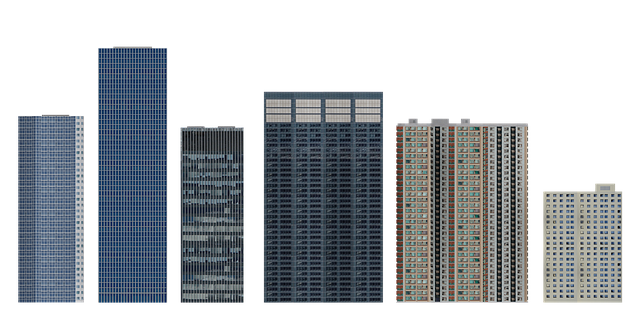Glulam, a modern timber framework system, is transforming construction with its unparalleled strength, flexibility, and minimal material waste through high-pressure bonding. Its ability to handle intricate geometry makes it ideal for contemporary architectural designs while enhancing structural integrity and sustainability. Glulam's pre-fabricated nature streamlines installation and reduces costs. In modern wood architecture, glulam revolutionizes design norms, allowing complex structures with longer spans and intricate details. As cities prioritize green initiatives, glulam is set to play a pivotal role in sustainable urban development.
“Discovering the future of construction, we explore the innovative world of glulam (glue-laminated timber) building systems. This modern timber framework is revolutionizing the industry with its strength and versatility. From sustainable advantages to creative applications, glulam offers a unique approach to architecture.
In this comprehensive guide, we’ll delve into how glulam is reshaping construction methods, ensuring a sustainable future while unlocking endless design possibilities.”
- Glulam: The Modern Timber Framework Revolution
- Advantages of Glulam in Sustainable Construction
- Creative Applications: Bending the Rules with Glulam
- Future of Building: Glulam's Role in Innovative Design
Glulam: The Modern Timber Framework Revolution
Glulam, short for Glulated Laminated Wood, is a modern timber framework system that’s revolutionizing construction. Unlike traditional wooden structures, glulam offers unparalleled strength and flexibility, allowing architects and engineers to create intricate designs with minimal material waste. This innovative system is particularly celebrated for its ability to handle complex geometry, making it the go-to solution for contemporary architectural visions.
Glulam’s structural integrity comes from its manufacturing process, where layers of timber are bonded together under high pressure. This results in glulam architectural elements that can span greater distances and support heavier loads than traditional lumber. Whether it’s a curved roofline or a seemingly weightless floor, glulam engineering ensures these unique designs become reality. By embracing this technology, builders can achieve esthetic goals while maintaining structural integrity and sustainability.
Advantages of Glulam in Sustainable Construction
The use of Glulam (glorified laminar wood) in sustainable construction offers a range of benefits that contribute to environmentally conscious building practices. Its structural integrity and strength make it an attractive alternative to traditional framing methods, especially in innovative glulam construction methods. Glulam panels for roof systems can provide exceptional load-bearing capacity while minimizing material waste, as the laminated structure ensures even distribution of stress. This reduces the environmental impact compared to solid wood or other framing materials.
Moreover, glulam framing advantages for contractors include faster installation times and improved precision. The pre-fabricated nature of Glulam panels allows for quicker assembly on-site, reducing construction schedules and labor costs. This efficiency not only benefits contractors but also promotes more sustainable building processes overall. With its versatility, strength, and environmental friendliness, Glulam is revolutionizing the industry, offering a compelling solution for eco-conscious architects and builders.
Creative Applications: Bending the Rules with Glulam
In the realm of modern wood architecture, Glulam (glue-laminated timber) has emerged as a game-changer, bending the rules of what’s possible in construction. This innovative material is revolutionizing building systems by offering unprecedented design freedom and structural integrity. With glulam, architects and engineers can create daring forms and complex geometries that were once thought impossible with traditional lumber. Its unique properties allow for longer spans, slimmer profiles, and intricate details, making it a favorite among designers pushing the boundaries of wood construction.
Glulam’s versatility is further enhanced by advanced structural analysis software, which enables precise calculations and simulations. This technology ensures that glulam structures are not only aesthetically striking but also safe and stable. When compared to traditional lumber, glulam offers superior strength-to-weight ratio and improved dimensional stability, making it a sustainable and efficient choice for modern building needs.
Future of Building: Glulam's Role in Innovative Design
The future of building is here, and it’s being shaped by innovative materials and construction techniques. Among these, glulam (glue-laminated timber) is emerging as a game-changer in architectural design. Its unique properties offer an array of glulam design possibilities, from elegant curves to complex geometric shapes that were once challenging to achieve with traditional building methods. By harnessing the strength and durability of timber, glulam construction techniques are revolutionizing sustainable urban development, providing eco-friendly alternatives for modern architecture.
As cities embrace green initiatives, glulam is perfectly positioned to contribute to the global shift towards more sustainable living spaces. Its versatility allows for creative and distinctive structures that blend seamlessly with natural landscapes, while also meeting stringent structural requirements. With an increasing focus on reducing carbon footprints, glulam’s role in shaping the future of building is set to grow, driving advancements in both architectural aesthetics and environmental responsibility.
Glulam, a revolutionary building system that harnesses the strength and aesthetics of timber, is poised to shape the future of construction. From its sustainable benefits to creative applications, glulam is not just a material but a catalyst for innovative design. As we look ahead, this modern timber framework is set to continue reshaping the built environment, offering architects and builders unparalleled versatility and sustainability.







